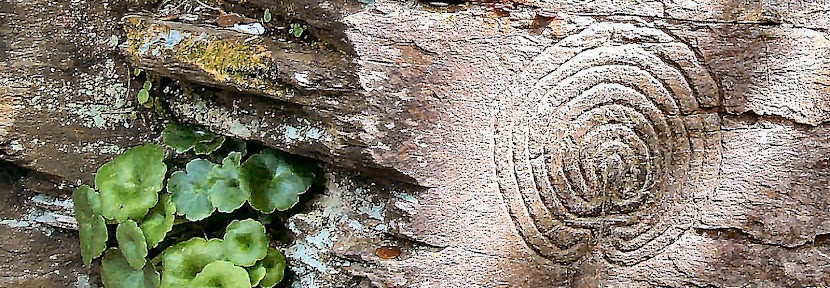The Screaming Skull of Tresmarrow
Alex Langstone
The legends and paranormal activity of the screaming skull stories form a fascinating part of the vast canon of ghost-lore and folk-horror. Within Britain, they seem to be almost entirely restricted to a few counties in England and are generally linked to the guardianship of particular historic houses. There is just one recorded in Welsh folklore that recounts a screaming skull at Ffagnallt Hall on Halkyn Mountain close to the Dee estuary. The skull is believed to be that of Dafydd, a Welsh prince who lived during the reign of Henry I, and if removed a wild shriek will haunt the house until it is returned, and a small fragment of the skull still remains in the house today.
The only known Cornish example of a screaming skull was recorded by Sabine Baring Gould, from a diary entry in 1882. Where he states - “A more curious tenancy is that of Tresmarrow near Launceston, where the house goes with a skull. The farmer now there buried the skull, but the noises, voices, knocks and trampling’s heard at night were intolerable, so they dug the skull up again and restored it - then the sounds ceased.”
I first came across this obscure legend on a visit to Launceston’s Lawrence House museum, where amongst the jumble of military, agricultural and domestic displays is the somewhat out-of-place but intriguing ‘Screaming Skull of Tresmarrow’.
The folkloric history of the skull begins during Cromwell’s war against the crown. At this time Tresmarrow House was owned by Sir Hugh Piper, who was Governor of Launceston Castle under Charles I. Piper was a staunch Royalist, and the original Tresmarrow, built in 1578 was razed to the ground by Roundheads marching from Launceston to Bodmin in 1646. After the restoration of the monarchy, Piper rebuilt Tresmarrow House and local tradition suggests that he placed the skull of a Roundhead in a niche in one of the walls of the new building to remind his family of the gruesome fate of Charles I. It may be interesting to note that a skull is carved on Sir Hugh Piper’s memorial in Launceston parish Church.
The skull seems to have been left alone for a couple of hundred years, until the Dawe family purchased Tresmarrow House in the late nineteenth century. One of the family took offence to the skull, and had it buried in the garden. However, loud noises and mighty disturbances began as soon as it was buried, and it was quickly recovered and placed back in its niche on the outside of the house. The screaming skull appears to have been kept in its original niche at Tresmarrow House since 1649, (except for when it was occasionally buried) and was rumoured to have been taken to Canada, when the Dawe family emigrated there in 1908. Tresmarrow House was demolished in the same year. The skull was finally returned to Launceston in 2001, which was when it came to be displayed in the town’s museum. Image below.
So, in summary, what if anything, does the only known Cornish screaming skull folk-legend have in common with any other screaming skull tales from across Britain? Well actually not very much. Each tale tells a different backstory. However, the one thing that they all have in common is a kind of guardianship for the buildings to which they are attached, and foreboding paranormal activity occurring when a skull is removed. In the case of the skull at Ffagnallt Hall, if the remains of the skull are taken, a shrieking noise will be heard in perpetuity until it is returned. Similarly, in Somerset, 18th century farmer Theophilus Brome from Chilton Cantelo laid a curse saying that if his skull were ever removed from his farmhouse after his death, he would scream, disturb and moan for all eternity.
There is one other human skull curiosity from eastern Cornwall that needs further investigation. On Looe Island, there was a skull preserved in a cupboard in the sitting-room of the Island House. Maybe this once had similar folklore associated with it? Research is ongoing around this subject, and if anyone has anything to add, please get in touch.






